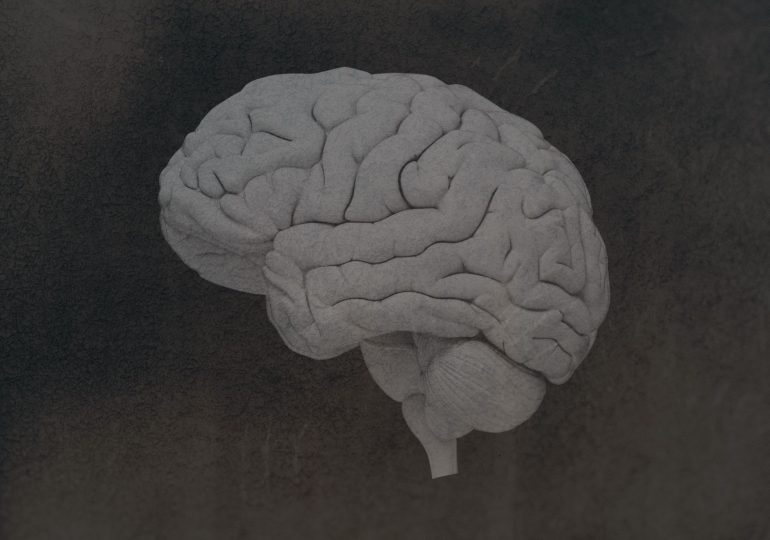When Shane Devon Tamura walked into a midtown Manhattan office building with an assault rifle, he also carried a note in his back pocket that provides the only hint at why he opened fire on people in the building. Tamura killed four and badly wounded another before shooting himself in the chest.
In the note, Tamura claimed to have CTE—chronic traumatic encephalopathy, a brain injury condition due to repetitive trauma to the brain—and that he wanted researchers to study his brain. Tamura played high school football in California, a sport that’s been linked to a higher risk of CTE. A source close to the investigation allegedly told CNN that Tamura had written a three-page note and complained about the way the National Football League managed players with CTE. “You can’t go against the NFL [National Football League], they’ll squash you,” CNN reported that he wrote. (The NFL’s headquarters are located in the building, but Tamura reportedly went to a different floor.) He asked that his brain be studied by researchers to better understand CTE.
[time-brightcove not-tgx=”true”]
The New York City Office of Chief Medical Examiner told CNN it would analyze Tamura’s brain as part of a complete autopsy. Depending on the wishes of his family, Tamura’s brain could go to other CTE researchers following that analysis for more detailed study.
Here’s what brain experts know about CTE.
What is CTE?
“CTE is linked to repetitive brain trauma and has a distinct pathology that can only be diagnosed at autopsy,” says Dr. Ross Zafonte, a principal investigator of the Football Players Health Study at Harvard University and executive vice dean at the University of Missouri.
The changes that occur in traumatic brain injury are generally too small and too subtle to pick up on brain scans, unlike strokes, says Dr. Maura Boldrini, professor of psychiatry at Columbia University Medical Center. “We are talking more about microstrokes in which repeated shaking can cause the capillaries [tiny blood vessels in the brain] to break. This leads to some leaking into the brain and starts the process of inflammation, which can lead to the death of brain cells and brain neurons.”
Read More: Is It Unethical to Watch Football With Your Kids?
CTE can only be diagnosed after death by experts studying slides of brain tissue from a deceased individual, says Zafonte. But there is a related clinical syndrome called traumatic encephalopathy syndrome (TES) that researchers are beginning to use in research studies to identify living patients who might be affected by CTE. it’s not clear yet what CTE looks like in living patients, so TES remains a research tool while scientists continue to refine how to diagnose CTE outside of postmortem studies.
How common is CTE?
Because CTE is caused by repetitive brain injury, any condition that exposes people to repeated trauma can put them at risk. That includes contact sports like football, hockey, and boxing, as well as certain kinds of military training and combat. Because it can only be diagnosed postmortem—and in cases where no crime has been committed, a person or family must donate the brain for study in order for the test to be performed—it’s not entirely clear how common the condition is among those at high risk. But Chris Nowinski, cofounder and CEO of Concussion Legacy Foundation and member of the UNITE Brain Bank at the Boston University Research CTE Center, says that current CTE brain banks generally find that about half of donated brains show evidence of the condition.
What are the symptoms of CTE?
Depending on which parts of the brain are affected by the repetitive trauma, different types of symptoms may appear. These can include cognitive impairment, changes in memory, altered mood, and changes in executive brain functions like logical thinking and reasoning. Irrational, aggressive and impulsive behavior are also common.
Read More: Repeated Hits to the Head—Not Concussions—May Cause CTE
In CTE, these changes tend to get progressively worse. “You generally don’t see symptoms two days after exposure; it’s usually a delayed onset, but things get worse and not better,” says Zafonte. “No other condition fully accounts for this.”
Can CTE be treated?
Because CTE and TSE result from damage to brain tissue, no known treatment can reverse the condition. But, says Zafonte, “there are things that can bend the curve in the way the symptoms appear.”
The idea is to build the brain’s resilience, or ability to withstand trauma, by keeping it as healthy as possible before any injury occurs. That includes a range of things such as physical activity including aerobic exercise and strength training, staying cognitively engaged, avoiding social isolation, and getting enough sleep. For athletes, Zafonte says addressing any chronic pain is also important, since living with chronic pain can affect mood. “All of these things interact with [brain] pathology, we believe, to form a nasty Gordian knot,” he says. “But how much reserve people have at the onset of symptoms is important.”
Boldrini says that there is some evidence that medications like anti-epilepsy treatments and antidepressants may help address symptoms linked to CTE. In some people, levels of serotonin may be out of balance, and certain antidepressants can help to bring levels closer to normal. Anti-epilepsy drugs can help to calm electrical activity that goes awry. These drugs can also “protect [neurons] from dying as well,” she says.
What research is being conducted on CTE?
The biggest priority is finding markers in the blood or in brain scans that can help to identify people with CTE while they are living, say experts. Scientists are sequencing the genomes in brain regions that postmortem studies show are affected by CTE to understand which cells and genes are aberrant. So far, says Boldrini, that research is showing that genes controlling processes like inflammation and the metabolic function of cells are likely driving some of the changes. Future treatments might target some of these changes to counteract them so cells remain functional and aren’t susceptible to damage, especially in people who might be at higher risk of repetitive brain trauma. “If we eventually had something we could use for athletes to help them sustain their brain health while engaging in these [high risk] sports, that would be great,” says Boldrini.
Read More: Inside Ibogaine, One of the Most Promising and Perilous Psychedelics for Addiction
Scientists are also studying ways to potentially reverse that damage, including how to help neurons regrow or recover from damage. “Right now, we can’t say that we have things that can reverse brain damage,” says Boldrini.
One of the fastest ways to deepen understanding of CTE is to begin collecting data on suspected patients’ blood and other factors while they are alive, so that if they are diagnosed with CTE postmortem, researchers can compare what measurable factors made them different from people without the condition.
The UNITE Brain Bank now has the world’s largest collection of such brains—1,600—and Boston University’s CTE Center is leading two studies that could yield important advances in CTE diagnosis in coming years, says Nowsinski. One involves former NFL and college players who agree to provide blood and other samples and then donate their brains upon their death. They will be compared with people without head trauma and those with Alzheimer’s disease to determine what distinguishes them.
Another study is following more than 900 former athletes who are providing blood samples and taking cognitive tests; they have also agreed to donate their brains upon their death. Over time, with enough people who end up being diagnosed with CTE postmortem, researchers should have a good sense of which factors in blood are good indicators of who might have CTE and who likely does not, says Nowinski.
“I’m excited for the future of biomarkers and biomedical targets that can mitigate some of the consequences of traumatic brain injury,” Zafonte says. “But we can also tell folks [at risk of] repetitive head trauma that there are many things they can do to potentially make themselves a little bit more resilient. We do what we can now, and when we know better, we will do better.”
Leave a comment





